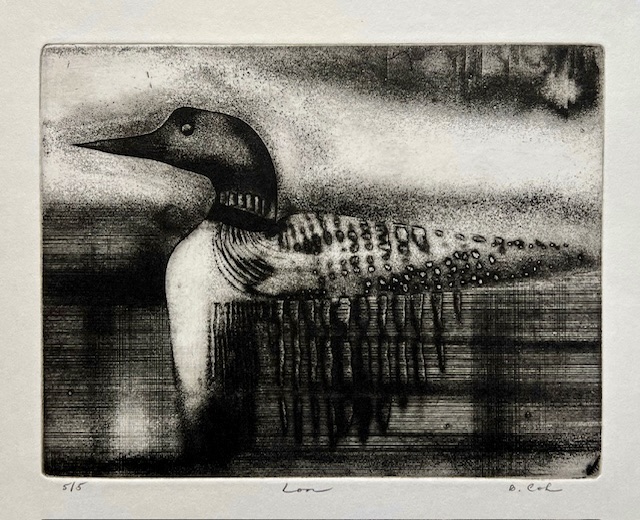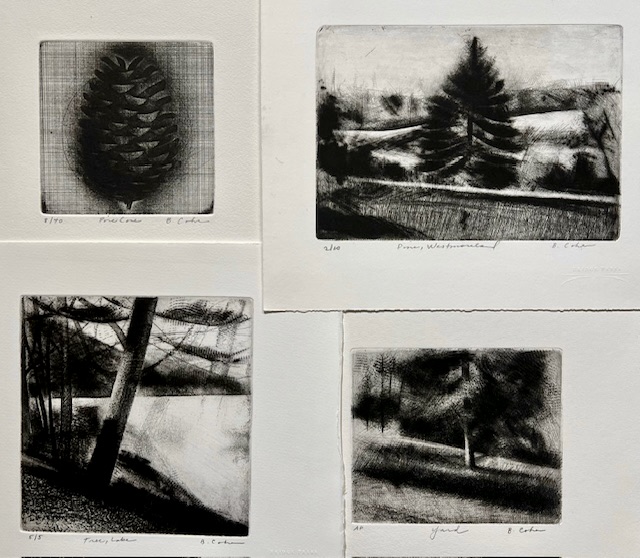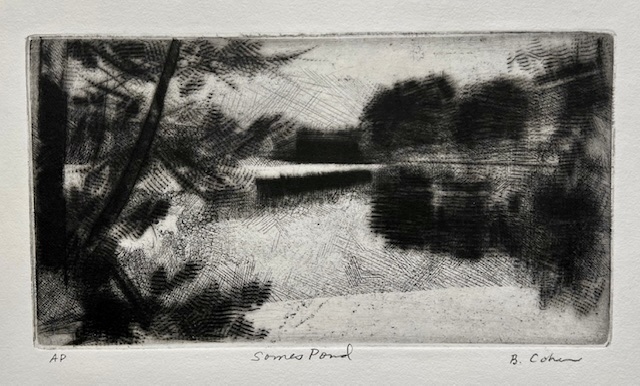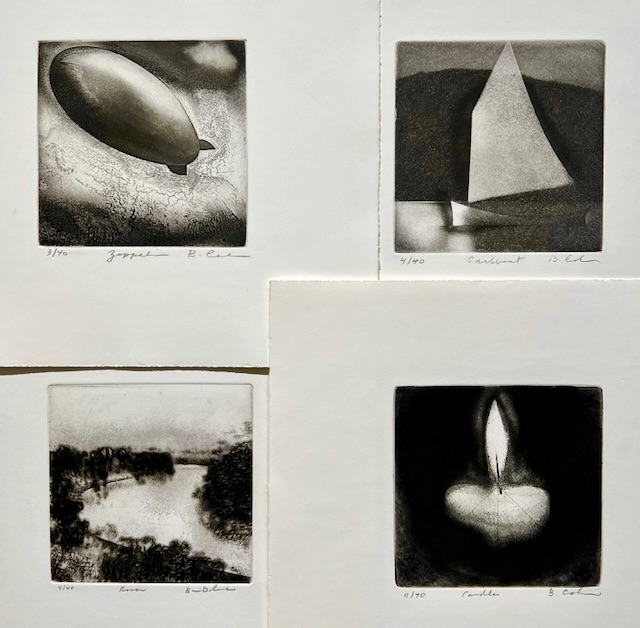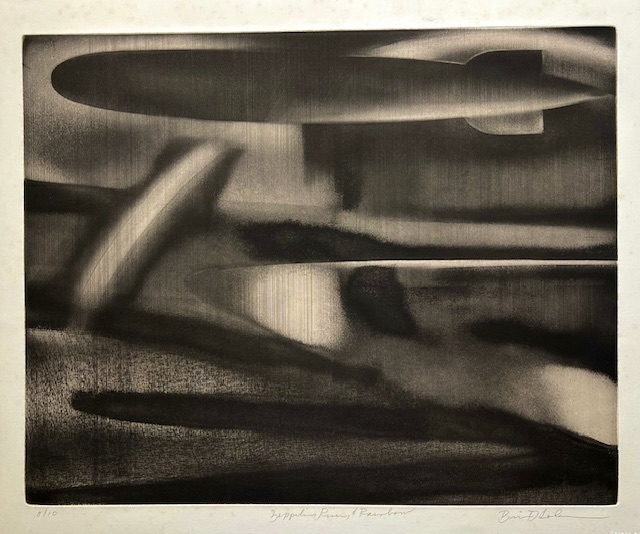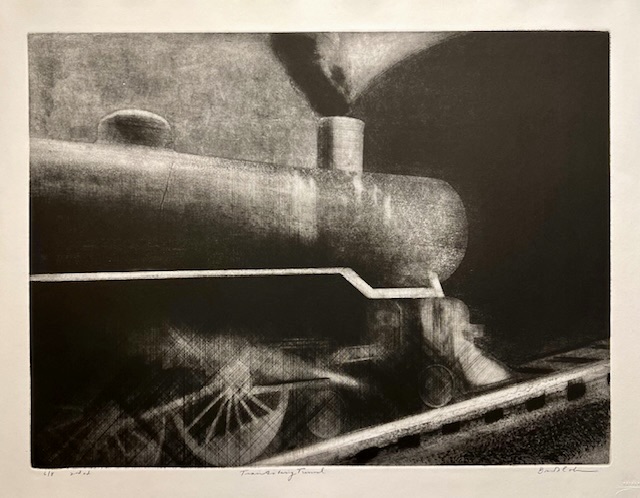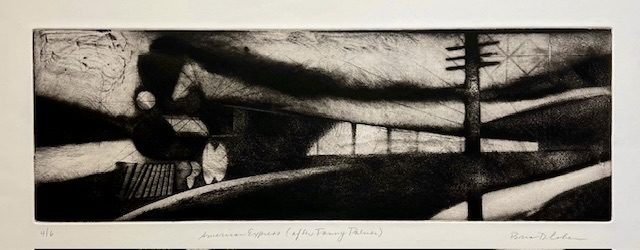Etchings
In traditional pure etching, a metal (usually copper, zinc or steel) plate is covered with a waxy material that is resistant to acid. The artist then scratches off the material with a pointed etching needle where he or she wants a line to appear in the finished piece, so exposing the bare metal. The plate is then dipped in a bath of acid. The acid "bites" into the metal where it is exposed, leaving behind lines sunk into the plate. The remaining protective material is then cleaned off the plate. The plate is inked all over, and then the ink wiped off the surface, leaving only the ink in the etched lines. The plate is then put through a high-pressure printing press together with a sheet of paper. The paper picks up the ink from the etched lines, making a print. The process can be repeated many times. Prints can be printed on various kinds of paper to create specific effects and further enhanced with hand coloring.
“Loon”
By Brian D. Cohen (Master Etcher)
“Pine Cone, Pine-Westmoreland, Tree-Lake, Yard”
By Brian D. Cohen (Master Etcher)
“Islands, Truro Bay”
By Brian D. Cohen (Master Etcher)
“Somes Pond”
By Brian D. Cohen (Master Etcher)
“Zeppelin, Sailboat, River, Candle”
By Brian D. Cohen (Master Etcher)
“Zeppelin, River & Rainbow”
By Brian D. Cohen (Master Etcher)
“Train Entering Tunnel”
By Brian D. Cohen (Master Etcher)
“American Express”
By Brian D. Cohen (Master Etcher)
“Two Bridges”
By Brian D. Cohen (Master Etcher)
